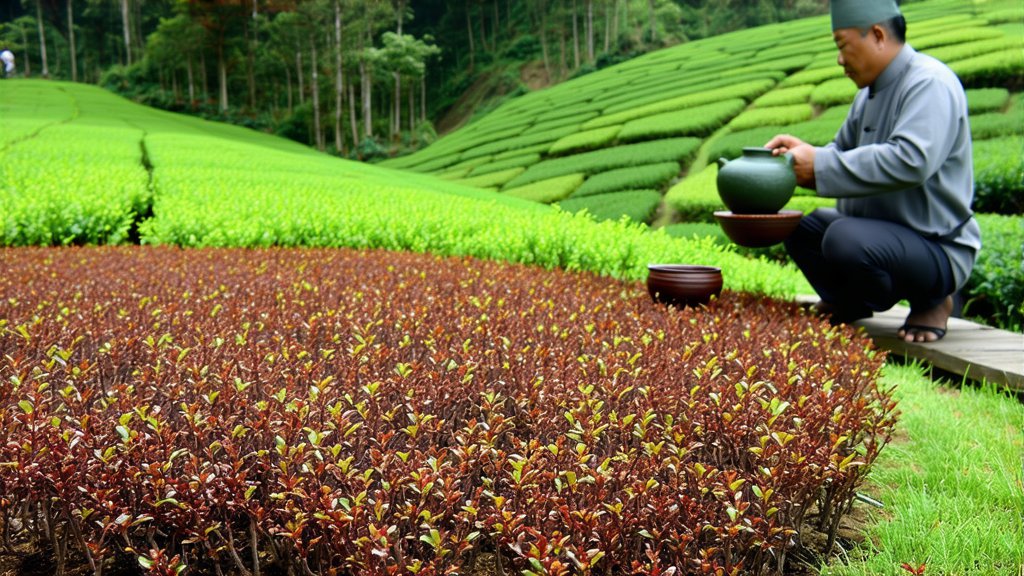
Introduction to Keemun Black Tea
Keemun Black Tea, also known as Qimen Black Tea, is one of the most revered and iconic teas in the rich tapestry of Chinese tea culture. Originating from the picturesque Qimen County in Anhui Province, this exquisite tea has captivated tea enthusiasts worldwide for centuries. Its unique flavor profile, characterized by a perfect balance of sweetness, spiciness, and a hint of tangerine peel, sets Keemun apart from other black teas. In this article, we will delve into the history, varieties, production processes, and tasting methods of Keemun Black Tea, offering an immersive experience into the world of this remarkable Chinese tea.
Historical Background
The story of Keemun Black Tea begins in the early 19th century during the Qing Dynasty. It was discovered by a local tea merchant named Hu Yuechen, who stumbled upon the unique fermentation process that gives Keemun its distinctive flavor. This serendipitous discovery quickly gained popularity among the imperial court and high-ranking officials, cementing Keemun's status as a prestigious tea. Over time, Keemun became a symbol of Chinese tea craftsmanship and cultural heritage, earning international acclaim for its exceptional quality and unique taste.
Varieties of Keemun Black Tea
Keemun Black Tea comes in several distinct varieties, each with its own unique characteristics and flavor profiles. The most well-known varieties include:
-
Keemun Hao Ya (Monkey Picked): This premium grade of Keemun is made from the youngest leaves and buds, handpicked by skilled tea farmers. It boasts a delicate aroma, smooth texture, and a lingering aftertaste that leaves a lasting impression on the palate.
-
Keemun Gong Fu (Kung Fu): Named after the meticulous craftsmanship involved in its production, this variety is known for its robust flavor and full-bodied mouthfeel. It undergoes a more extended fermentation process, resulting in a deeper, more complex taste profile.
-
Keemun Hong Zhen (Red Brocade): As the name suggests, this variety features long, twisted leaves that resemble red brocade fabric. It offers a balanced blend of sweetness and spiciness, with a subtle hint of tangerine peel that adds depth to its flavor.
-
Keemun Xue Li (Learner's Grade): This entry-level Keemun is an excellent choice for those new to the world of Chinese tea. While it may not possess the same level of refinement as higher-grade varieties, it still delivers a delightful taste experience that showcases the essence of Keemun Black Tea.
Production Processes
The production of Keemun Black Tea is a labor-intensive process that requires great skill and precision. Here are the key steps involved in crafting this exquisite tea:
-
Withering: Freshly harvested tea leaves are spread out in thin layers to allow them to wilt and lose moisture. This process helps to soften the leaves and prepare them for rolling.
-
Rolling: The withered leaves are then rolled using traditional bamboo rollers or modern machinery to break down cell walls and release essential oils. This step is crucial for developing the tea's characteristic flavor and aroma.
-
Fermentation: Rolled leaves are left to ferment under controlled conditions, allowing natural enzymes to break down tannins and convert sugars into simple sugars. This process imparts Keemun's signature sweetness and spiciness.
-
Drying: After fermentation, the tea leaves are dried using hot air or sunlight to reduce moisture content and prevent further oxidation. This step ensures the tea's stability and longevity.
-
Sorting and Grading: Finally, the dried tea leaves are sorted and graded according to their size, shape, and quality. Higher-grade Keemun teas are carefully selected for their uniform appearance and superior taste.
Tasting Methods
To fully appreciate the nuances of flavors in Keemun Black Tea, it is essential to follow proper tasting techniques. Here are some guidelines for an authentic Keemun tea experience:
-
Choose the Right Teaware: Use a Gaiwan or Yixing clay teapot to brew Keemun tea, as these vessels help enhance the tea's aroma and flavor. A clear glass cup can also be used for visual appreciation of the tea's color and clarity.
-
Measure the Tea Leaves: For a standard serving size (about 200ml), use approximately 3-5 grams of loose leaf Keemun tea or one tea bag. Adjust the quantity based on personal preference and desired strength.
-
Preheat the Teaware: Rinse the teapot and cups with hot water to warm them up and remove any residual flavors from previous uses. This step ensures that the tea's true essence is not compromised.
-
Infuse the Tea: Place the measured tea leaves into the preheated teapot and pour boiling water over them. Allow the tea to steep for 2-3 minutes before decanting it into cups for serving. For subsequent infusions, adjust steeping times accordingly to avoid bitterness.
-
Observe the Aroma: Before taking your first sip, take a moment to appreciate the tea's aroma by gently swirling the cup and inhaling deeply. Note any floral, fruity, or woody notes that arise from the steam.
-
Sip Slowly: Take small sips of the tea, allowing it to coat your entire mouth and engage all your taste buds. Pay attention to the initial sweetness, mid-palate spiciness, and aftertaste that lingers on your tongue. These elements together create a harmonious balance that defines Keemun Black Tea's unique character.
Conclusion
Keemun Black Tea stands as a testament to China's rich tea heritage and unparalleled craftsmanship. From its humble beginnings in Qimen County to its status as a global icon of Chinese tea culture, Keemun has captivated hearts and minds across generations. By exploring its history, varieties, production processes, and tasting methods, we gain a deeper appreciation for this extraordinary tea and its place within the broader context of Chinese tea culture. Whether you are a seasoned tea connoisseur or just beginning your journey into the world of fine teas, Keemun Black Tea offers an unforgettable experience that celebrates the artistry and tradition behind every cup.